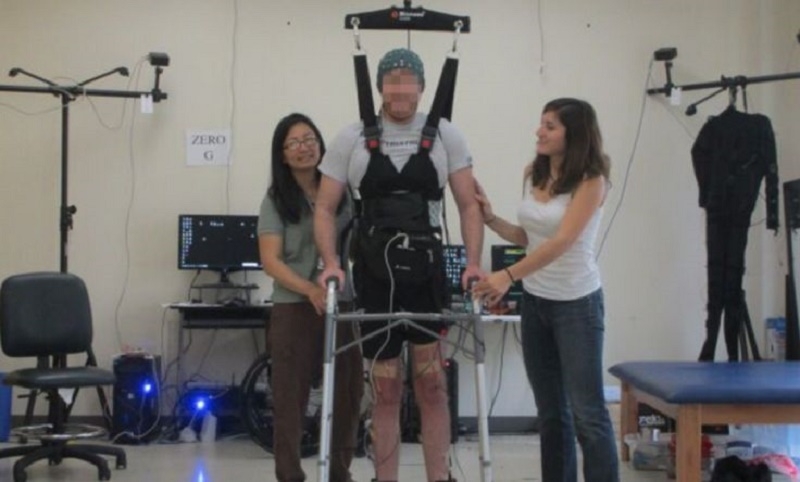 Paralyzed man walks for the first time in five years using harnessed brainwaves
Paralyzed man walks for the first time in five years using harnessed brainwaves
By Rob Thubron on
A man who has been unable to move both legs after his spinal cord was completely severed in a motorcycle accident five years ago has made medical history after doctors reconnected brain signals to his legs, according to a study published in the Journal of Neuroengineering and Rehabilitation.
26-year-old Adam Fritz used a functional electric stimulation (FES) device to walk 13 feet simply by thinking about it. The device works by using a special electrode-studded cap to transmit signals from his brain to electrodes around his knees, bypassing damaged nerves in the spine. The signals stimulate his muscles, allowing him to swing his legs.
Fritz had to undergo mental training to reactivate his brain’s ability to walk before the test took place. He also required months of physical work to prepare his leg muscles which had not been used in over half a decade. Part of his training to operate the electroencephalogram (EEG) cap involved using it to control a character in a video game.
It took 19 unsuccessful attempts before Fritz managed to walk with assistance. Although he is still a long way off being able to walk unaided, the feat has been called a medical milestone. It is the first time a paralyzed person has been able to use their own legs to walk rather than an exoskeleton.
"It was incredible. When you're first injured, you're sitting in hospital hoping you'll walk again but when it actually happened, it was a dream come true. I actually did it and it was something I'll never forget," Fritz told Sky News. "I think, just watching the way technology evolves, this is something that will continue to grow."
Neurologist Dr An Do, part of the team behind the project at the University of California in Irvine, said: “Even after years of paralysis the brain can still generate robust brainwaves that can be harnessed to enable basic walking. We showed you can restore intuitive, brain-controlled walking after a complete spinal cord injury.”
Experts say further studies are needed to determine whether the device can help others who are wheelchair-bound. Scientists hope the technology will advance to the point where a chip can be implanted into the brain to send signals to the legs, rather than using a cap, as this would give the person greater control and balance thanks to the brainwaves being recorded at a higher quality. It’s also hoped that the legs will eventually be able to send signals in the opposite direction – allowing the person to actually feel their lower limbs and the floor beneath them.
No comments:
Post a Comment